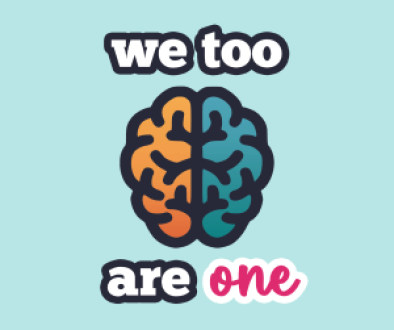ADHD Diagnosis: Why are girls often missed

Why are girls often missed? Understanding ADHD under-diagnosis in childhood
More boys than girls are diagnosed with Attention Deficit Hyperactivity Disorder (ADHD) in childhood at a ratio of 2:1. Research suggests that females with ADHD are often missed, diagnosed later, and are less likely to receive the support they need. So, what’s going on, and what are the key reasons why girls are less likely to be identified with ADHD during their younger years?
Boys VS girls: the diagnosis gap
When ADHD was formally defined, more boys met the criteria than girls. In studies looking at children in clinics, the ratio is around 4 boys for every 1 girl diagnosed.
However, when researchers look at the general population, this gap narrows to about 2 to 1. This suggests that some girls who actually have ADHD aren’t being picked up in clinics. Studies also show that girls who meet the criteria for ADHD face more hurdles in getting diagnosed and treated promptly. This indicates a real issue with recognising ADHD in girls.
Could biology play a part?
ADHD runs in families, pointing to a genetic link. While sex chromosomes might have a small influence on the higher rates in boys, ADHD is a complex condition involving many genes.
Interestingly, research has not found major genetic differences in the types of genes linked to ADHD in boys and girls. Some theories suggest that girls might need a stronger ‘genetic push’ to show ADHD traits. However, more research, with more girls participating, is needed to fully understand the biological factors at play. Studies are investigating the role of hormones and the timing of puberty, but currently their role (if any) in why girls are under-diagnosed remains unclear.
Are ADHD Diagnostic Tools Biased?
The criteria used to diagnose ADHD were largely developed based on how the condition presents in boys.
While ADHD symptoms are assessed similarly across sexes, hyperactive and impulsive behaviors can manifest differently. For instance, boys may be more prone to exhibit externalised symptoms such as fidgeting or running around. Whereas girls might exhibit excessive talking or frequent interruptions. This suggests that the hyperactive-impulsive presentation of ADHD may look different in girls.
Experts argue that ADHD in girls is often less overt, with symptoms appearing more internalised—such as excessive daydreaming or racing thoughts. It may also be more evident in social interactions, with impulsive topic shifts during conversations. If diagnostic tools and criteria fail to account for these female-typical presentations, girls may be overlooked or misdiagnosed.
Additionally, the requirement that ADHD symptoms must appear in multiple settings (such as home and school) may disadvantage girls, as research suggests their symptoms may be more pronounced in one environment than another. This could further contribute to delayed recognition and support.
Misdiagnosis and Diagnostic Overshadowing
Sadly girls are often misdiagnosed. One study found that around 46% of women were misdiagnosed with another disorder before being diagnosed with ADHD.
Studies have found that girls with ADHD are more likely to be diagnosed with anxiety before their ADHD is recognised. These misdiagnoses can result in internalising problems and cause low self esteem.
Another key reason girls might be under-diagnosed is that other mental health issues, like anxiety or depression can mask the underlying ADHD.
This “diagnostic overshadowing” can delay the correct diagnosis and the appropriate support. Late diagnosis of ADHD in girls can have severe consequences for their lives.
Sex-specific thresholds for diagnosis
Emerging evidence suggests that ADHD in girls may be held to a higher, unwritten diagnostic threshold. Even when girls exhibit a significant number of ADHD symptoms, they may be less likely to receive a formal diagnosis or treatment unless they also display hyperactivity, behavioral challenges, or emotional distress.
This suggests that, for girls, ADHD alone may not be perceived as sufficient grounds for diagnosis or intervention. Studies have even identified groups of girls with clinically relevant ADHD symptoms who fall just below diagnostic criteria yet still struggle with attention, executive function, and emotional regulation. But because they are not disruptive they are overlooked. A revised, diagnostic threshold could help capture these overlooked cases and ensure they receive the support they need.
Societal expectations and masking
The way society expects girls to behave can also play a role. Parents and teachers, who are often the first to notice potential issues, might perceive the same behaviours differently in boys and girls due to stereotypes about ADHD being a “boys’ condition.”
Some studies using descriptions of the same behaviour, just changing the child’s name to be male or female, found that adults were less likely to recommend support for the “female” child.
Furthermore, girls with ADHD might develop ways to compensate for their difficulties or mask their symptoms to fit in socially. This “masking” can make their ADHD less obvious to others, even though they are still struggling internally. These strategies can take a toll on mental health. Understanding these coping mechanisms in girls with ADHD is a growing area of research.
How can adult women process a late ADHD diagnosis?
For adult women who receive a late ADHD diagnosis, self-compassion becomes a vital tool for healing and growth. Years, even decades, may have been spent navigating life with undiagnosed ADHD, leading to feelings of inadequacy, frustration, and self-blame for struggles that were not fully understood.
Recognising that these challenges stemmed from a neurodevelopmental condition, rather than personal failings, can be profoundly liberating. Self-compassion encourages these women to treat themselves with the same kindness and understanding they would offer a friend in similar circumstances.
It means acknowledging the difficulties they faced without the right support, validating their past experiences, and accepting their neurodiversity as an integral part of who they are, though not the whole picture. Embracing self-compassion allows for a gentler narrative, replacing self-criticism with acceptance and fostering a sense of hope and empowerment as they move forward.
More on ADHD and women: understanding hormones and ADHD.
ADHD symptoms affecting your couple? Find out how I can help.



